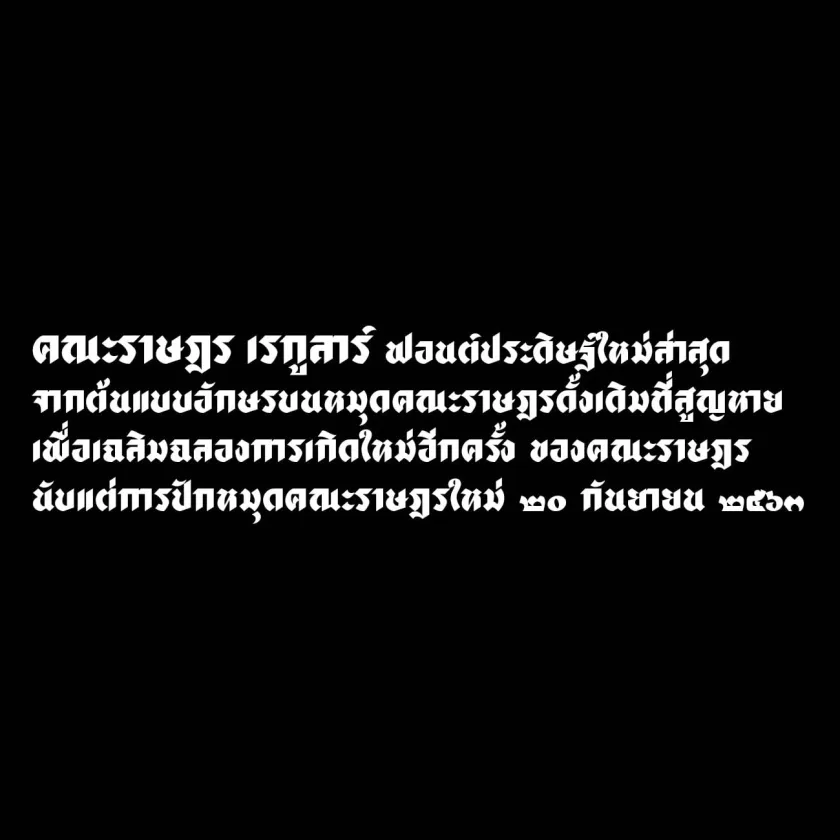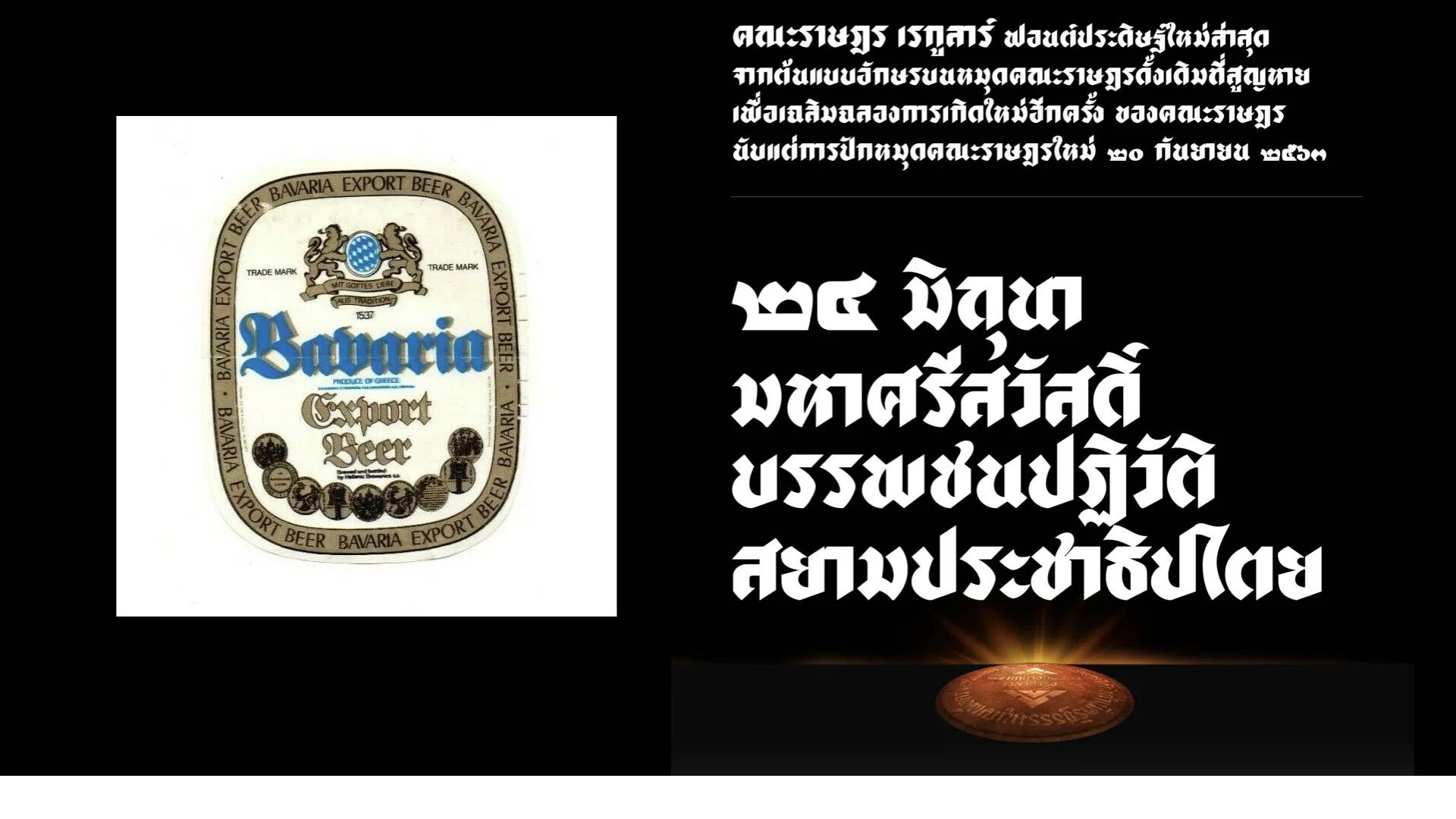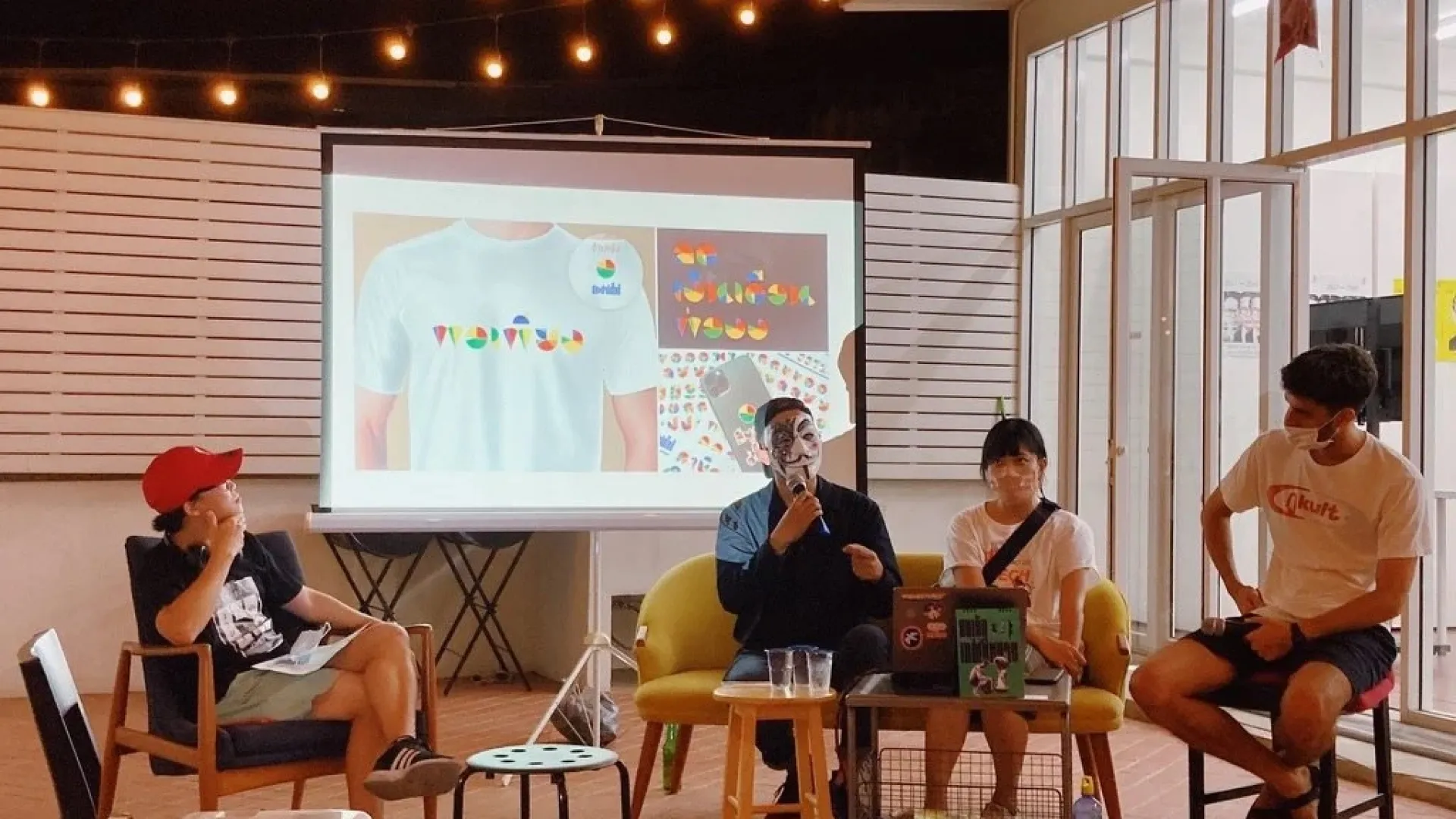Typefaces or fonts are sets of characters used for communication in written form, appearing in various types of print. The artistic style or lines of a font, with its different dimensions, contributes to the perception of the written content and reflects the history and culture of the era in which each typeface was created. The first Thai typeface, named "Jadson," appeared during the late reign of King Rama II (around 1816). It was the work of Dr. Adoniram Judson and Ann Hazeltine Judson, American Baptist missionaries who traveled to Rangoon, Burma, to spread their religion. They created a Thai typeface by referencing the handwriting of Siamese captives who had been taken during the second fall of Ayutthaya. Subsequently, Thai fonts evolved with the establishment of printing houses and publications in various eras.
According to the research of Anek Nawikkamun, prior to the Siamese Revolution the newspaper industry was flourishing greatly, as was the use of bold and large fonts for headlines. One such popular font was "Pong Sae" (designed by Mr. Sae, a woodcarver), which became widely used in shop signs and promotional posters, including the "Proclamation of the People's Party" poster in 1932. After the Siamese Revolution, the People's Party attempted to introduce modern art and architectural styles from abroad. This influence was also evident in the fonts used for communication, particularly in the use of angular or squared-off typefaces, which were distinctly different from traditional handwritten styles. This typeface originated from Prince Narisara Nuwattiwong, "the Great Craftsman of Siam," who adapted the Blackletter font from English into Thai characters. This font style was clearly seen in the printing of the "Six Principles" of the People's Party and the inscriptions on the People's Party plaque. (Even later, when Field Marshal Plaek Phibunsongkhram served as Prime Minister, this angular typeface continued to be used in official documents).
However, with the advancement of printing technology in the 1950s and the efforts of the royalist faction to erase the legacy of the People's Party, the squared-off typefaces of the People's Party gradually fell out of favor. This decline continued until later, when a new generation began to take an interest in the history of the People's Party as originators of democratic ideas in Thailand, especially after the 2014 coup. The design of digital fonts with historical and political significance, such as "Khana Ratsadon," "Hua Hai," "33712," and "FC Rebel," became artistic tools used to oppose dictatorship, particularly on protest signs at various rallies (as referenced in the book "Mob Type: A Record of the People's Struggle Through Typography," written by the groups PrachathipaType and Design For Life, published in 2022). Among these fonts that carry a message of resistance, the "KhanaRatsadon-Regular" font, designed by an anonymous creator in 2020 (who declared their intention for the font to be used freely by the public as a common asset), stands out. This font directly replicates the squared-off typeface from the People's Party era and clearly reflects the revival of the People's Party spirit among the new generation. It also signifies the original People's Party plaque that went missing, which featured this typeface. The anonymous font designer expressed their intention as follows:
"I dedicate this Khana Ratsadon font to the people, just as the People's Party planted the plaque to change the government and bestow supreme power to the people. Let it serve as a reminder that even though the original People's Party plaque has disappeared, its ‘spirit’ will endure."



